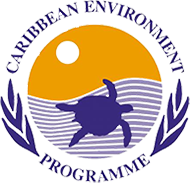Overview
Article VI of the Pollution or LBS Protocol recommends the need for monitoring and assessment programmes.
It states that '...Such programmes may:
-
identify and assess patterns and trends in the environmental quality of the Convention area; and
-
assess the effectiveness of measures taken to implement the Protocol.
Why do we need Recreational Water Quality Monitoring?
Development of the State of Convention Area Report
In 1994, we concluded the first regional overview of land-based sources of pollution in the WCR (CEP Technical Report No. 33). As such, the data was outdated and had limited value to CEP Governments as a current information source.
An update was completed in 2011 resulting in Technical Report No 52. This update was carried out during the period 2005-2010 in two phases. The first phase involved two workshops in Caracas and Havana in 2005 and 2006, respectively, on Methodologies for Estimating Domestic and Industrial Pollutant Loads from land-based sources in WCR.
The second phase involved the assessment and analysis of National Technical Reports presented by Barbados, Belize, Colombia, Costa Rica, Cuba, French Guiana, Guadeloupe, Martinique, Guatemala, Jamaica, Nicaragua, Panama, Dominican Republic, Trinidad & Tobago, and Venezuela to provide updates on the pollutant loads discharged in the WCR.
CEP Technical report No. 52 provides an update of the domestic and industrial pollutant loads discharged in the WCR, sanitation coverage expansion and treatment, as well as the pollutant loading from watersheds inflows. It also presents the projected changes of pollutant loads for the years 2015 and 2020 in fulfilling UN Millennium Development Goals. Other related reports produced involving monitoring and assessment including Know Why Network, and Baseline Analysis of Domestic Wastewater were produced.
In 2011, the Secretariat established an Interim Working Group in accordance with Decision XI of the 14th IGM to continue work related to Environmental Monitoring and Assessment. The group used the new CEP Technical Report #52 (Updated Technical Report No. 33) and other relevant studies as a baseline for identifying new activities to improve effluent reporting and assessment of water quality conditions throughout the Convention Area.
Based on Country nominations, the working group consisted of representatives from Jamaica (chair), The Bahamas, Columbia, Mexico, Barbados, USA, Trinidad and Tobago and France with technical support from the LBS RACs – IMA and CIMAB. Based on discussions of the Interim Working Group it was decided that the Group would work on developing an outline for the State of Convention Area Report (SOCAR) required under the LBS Protocol.
Subsequent Recommendations of the 2014 and 2016 STAC Meetings of the LBS Protocol and Decisions of the Conference of Parties of both the Cartagena Convention and the LBS Protocol provided further guidance for the Working Group whose mandate was extended in 2014 and again in 2017 under the Chair of the Government of the United States, to oversee the continued SOCAR development process.






